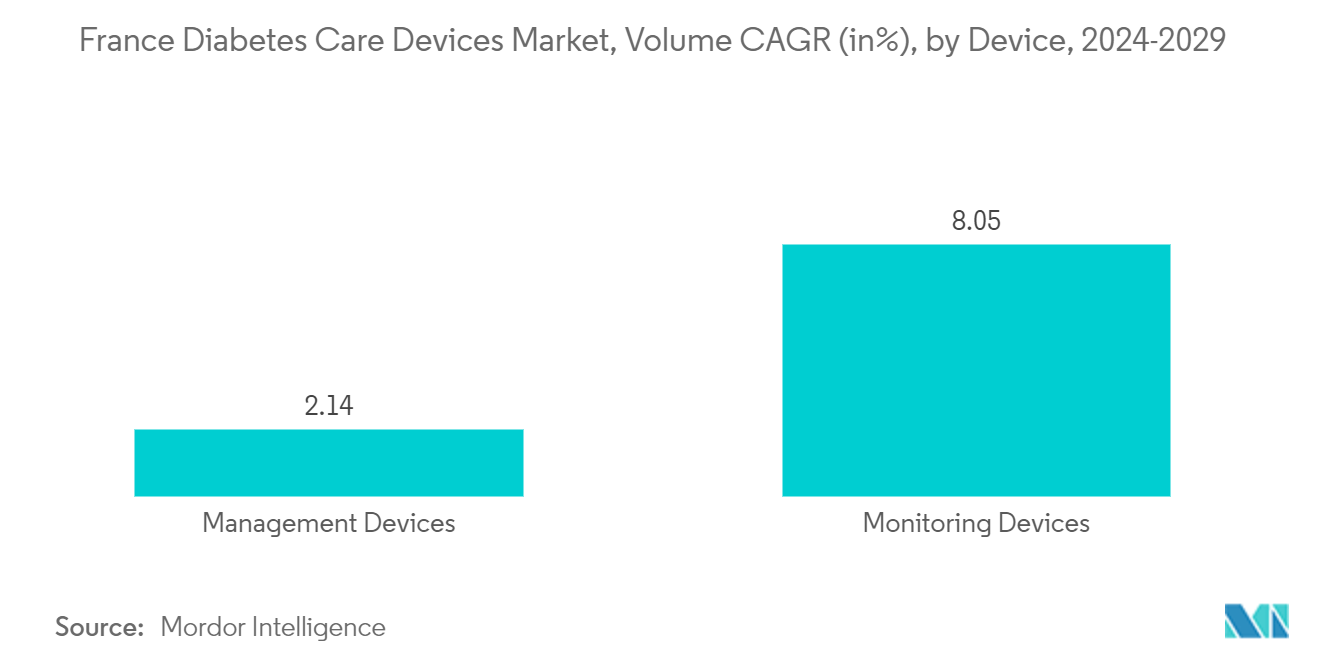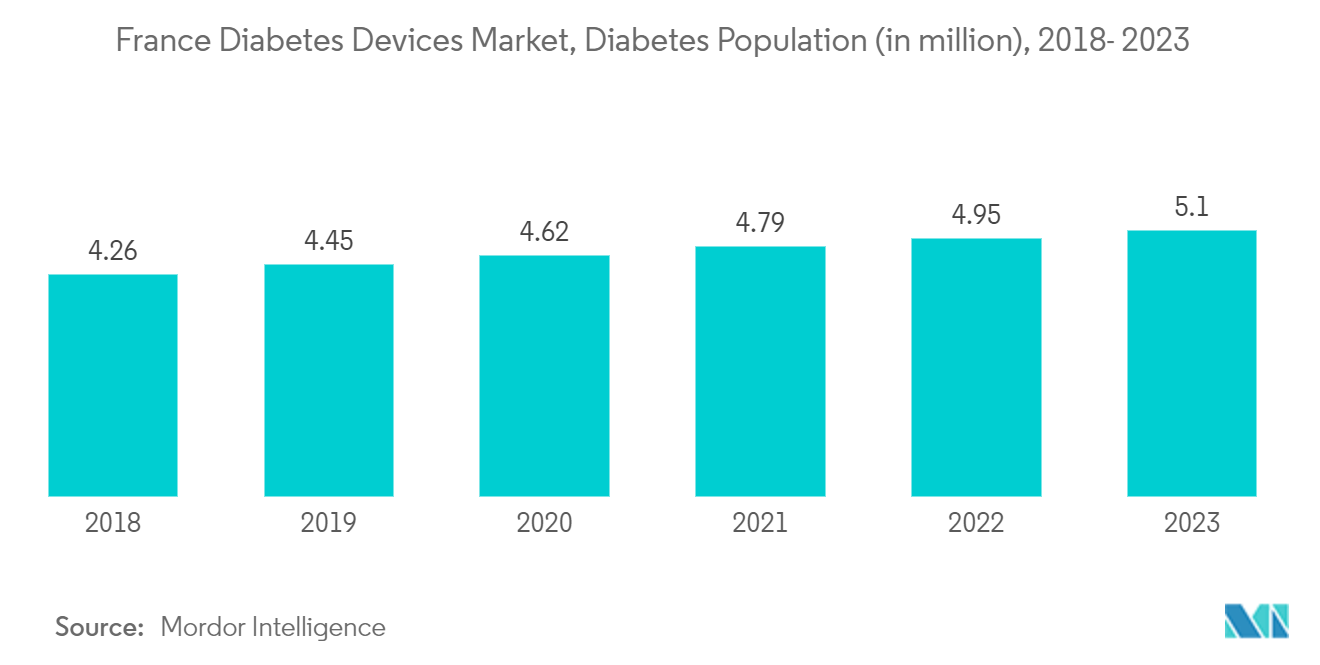Market Trends of France Diabetes Devices Industry
Monitoring Devices Hold Highest Market Share in France Diabetes Care Devices Market
In France, over a lifetime time horizon, the G6 RT-CGM system is likely to be cost-effective compared with SMBG for individuals with long-standing T1D. One of the commitments stipulated in the French National Health Strategy for 2018-2022 was to guarantee prompt and universal access to innovations such as new medical devices.
However, there are increasing financial strains on many health systems, so a sizable clinical benefit that outweighs currently available technologies should be enough to justify the cost of novel technologies. Given the incremental clinical and QoL benefits afforded by the Dexcom G6 RT-CGM system in France. As people suffering from diabetes were at an increased risk of COVID-19 infection, the French companies ensured an adequate supply of the required monitoring devices on the market to ensure the well-being of the affected citizens.
In France, the insurance plans reduce the burden on the diabetic population. However, different policies exist for both the type-1 and type-2 diabetic populations. For instance, the insurance covers up to 200-400 test strips in a year for the type-2 population, whereas for the type-1 population, it covers approximately 3,000 test strips in a year.

Increasing Diabetes Population in France Boosting the France Diabetes Devices Market during forecasting period
In France, the type-1 diabetes population increased with a CAGR greater than 3% over the forecast period.
France is one of the 59 nations in the IDF-EUR area. Moreover, in 2022, 62 million individuals in the Europe Region and 538 million people worldwide were expected to have diabetes; by 2045, this number is expected to increase to 69 million. According to a survey by the EU Commission, the number of people in France who have chronic diabetes is the highest, and one in 10 people in France suffer from diabetes.
The prevalence of diabetes is significant in France, although the rules' target of 80% compliance with advised healthcare consultations isn't always met. To promote proactive therapy adjustment and decrease therapeutic inertia, new techniques that focus on patient and physician education and information are necessary to lessen the burden of complications and hospitalizations associated with diabetes.
According to a 2022 article titled "Epidemiology and Health Impact of Diabetes in France," problems associated with diabetes were more common in people with diabetes type-1 than type-2 over a 5-year period (52.2 vs. 34.7%). Over a period of two years, diabetes-related admissions were also more common in diabetes type-1 patients than in diabetes type-2 patients (29.8% vs. 16.9%).
When risk factors, including obesity and a sedentary lifestyle, continue to rise in France and elsewhere, it is challenging to reverse the diabetes trend there. In order to lessen the burden of the condition, the French public health law was modified in 2022 to add two provisions that aimed to boost adherence to the advised medical monitoring of diabetes patients and reduce the incidence of complications from diabetes, with a focus on cardiovascular events.
The French health authority (HAS) developed the recommended treatment routes for patients with DT1 and DT2, putting a focus on problem detection and cardiovascular risk monitoring. Despite these initiatives, the French diabetic population has struggled to accept the recommendations due to inertia.
Therefore, owing to the aforesaid factors, the growth of the studied market is anticipated in France.


